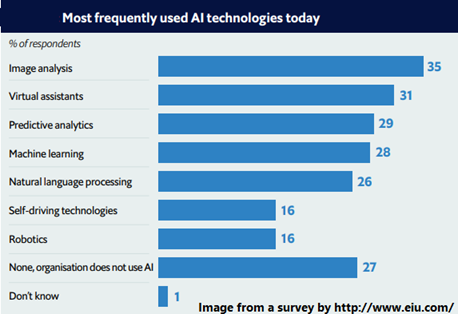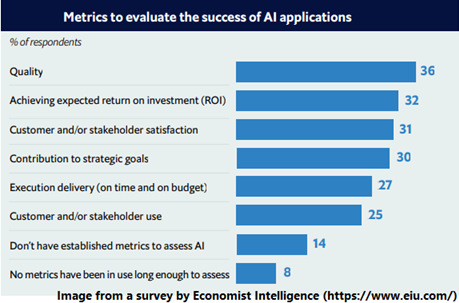
This blog delves into the imperative for a robust AI Strategy to harness AI’s potential for greater impact and value creation.
The Current State of AI Across Industries
AI’s versatility is evident in its varied applications across sectors. Financial services leverage AI for improved customer experiences and fraud detection. Healthcare capitalizes on it for preventive care, while governments utilize AI for public safety and traffic management. As AI becomes entrenched in our professional and civic lives, its influence on the economy, society, and individual lives will be significant. However, this transformation is not without its unique set of challenges and risks.
According to PwC’s 2017 report, “Sizing the Prize,” AI could potentially boost the global GDP by 14% by 2030, signifying its economic impact. This surge in AI capability is attributed to the proliferation of digital data, affordable processing, and storage solutions, alongside advanced algorithms capable of high-speed, accurate decision-making and recognition tasks.
AI, is software that can analyze vast and varied data sets rapidly, learn from this analysis, and iteratively refine and enhance processes and systems for added value.
AI in Action: A Snapshot from the Field
The Economist Intelligence Unit’s survey of 400 CIOs and CEOs across various sectors provides insights into the most prevalent AI technologies.

Image analysis emerges as the frontrunner at 35%, followed by predictive analytics and machine learning. Financial services show a keen interest in virtual assistants, predictive analytics, and machine learning to address challenges like loan default prediction and operational efficiency.
The finance sector is increasingly embracing virtual assistants, predictive analytics, and machine learning. These technologies are particularly employed for anticipating loan defaults, detecting fraudulent activity, improving operational efficiencies, and uncovering transactional patterns. Financial institutions underscore their dependence on internal data and established processes to make sense of data sets and discern patterns. This rich data infrastructure positions them well to leverage AI for a range of compelling applications.

Survey data underscores predictive analytics as the preeminent AI application, with its use taking precedence over operations management and enhancing customer experience. Nonetheless, the prioritization of AI technologies varies by industry. For instance, the retail sector emphasizes customer experience enhancements, the manufacturing industry invests in research and development, and the financial sector focuses on predictive analytics.
The Spectrum of AI Challenges and Risks
The path to AI integration is complex, necessitating a thoughtful AI Strategy that adopts a ‘start small, think big’ approach. IT and AI leaders play a crucial role in this strategy, given the financial, executional, and security risks involved. A key challenge is ensuring the workforce is on board, embracing new technologies and upskilling accordingly. Large organizations and agile startups alike are developing policies and procedures to mitigate these risks and ensure responsible AI governance.
Measuring AI’s Success
The true measure of AI’s success lies in its value to customers.

Organizations must converge on reliable metrics to gauge AI’s effectiveness, whether it’s in improving customer service response times, forecasting negative reviews, or predicting operational downtimes.
AI’s potential to drive intelligent economies, cities, and societies is immense. To tap into this potential, organizations must prioritize AI use case exploration, resource engagement, and experimental approaches to technology and data.
Why an AI Strategy is Non-negotiable
While the promise of AI is acknowledged, transitioning from potential to realized value is challenging. As McKinsey’s insights suggest, the main barriers are a well-defined strategy, skillset, and culture. AI can offer substantial benefits, from time savings and process automation to quality enhancements and customer experience improvements. A cohesive AI strategy ensures alignment with business objectives, prioritizing strategic use cases and fostering a culture of analytics and AI initiative ownership.

